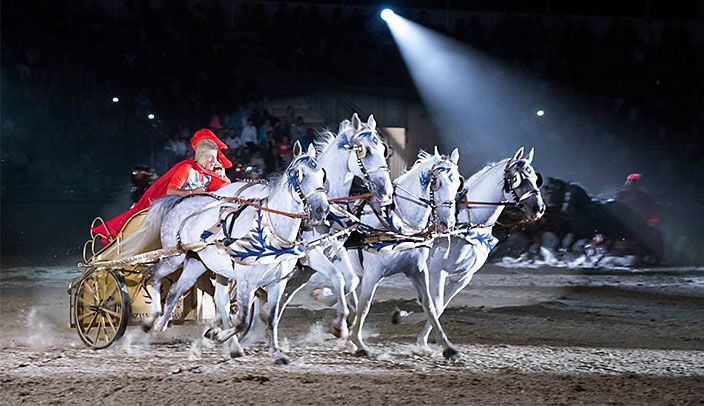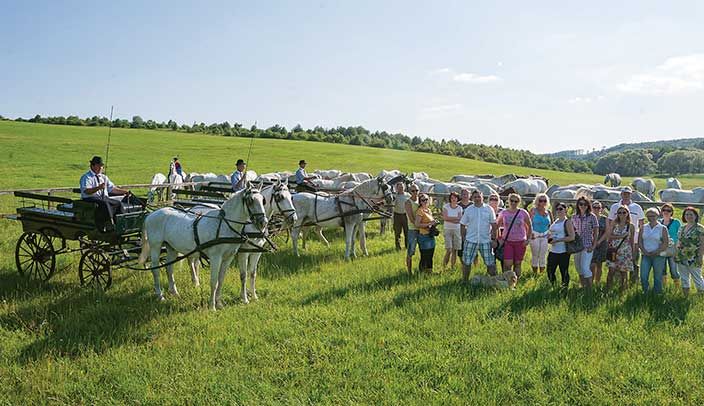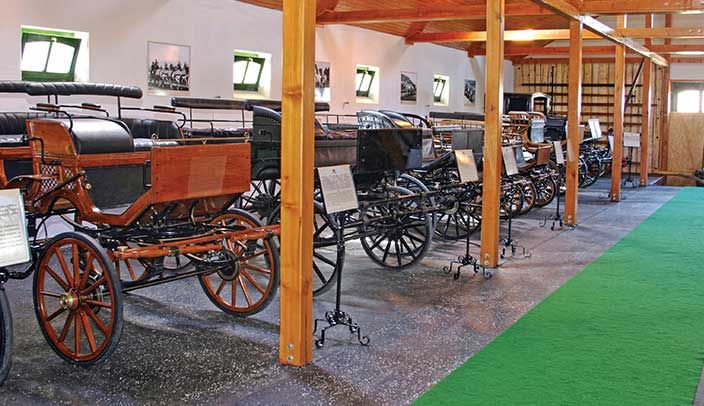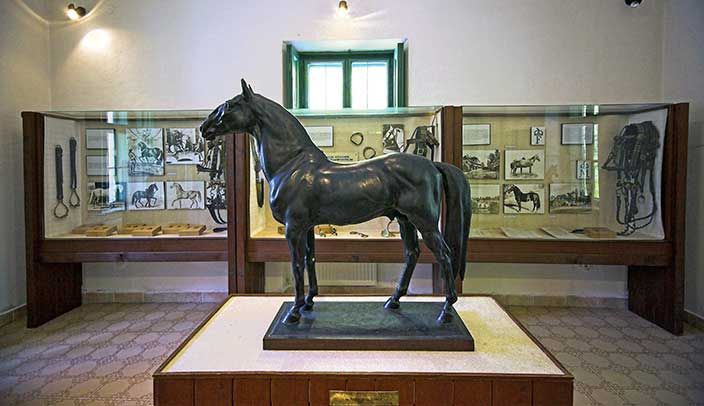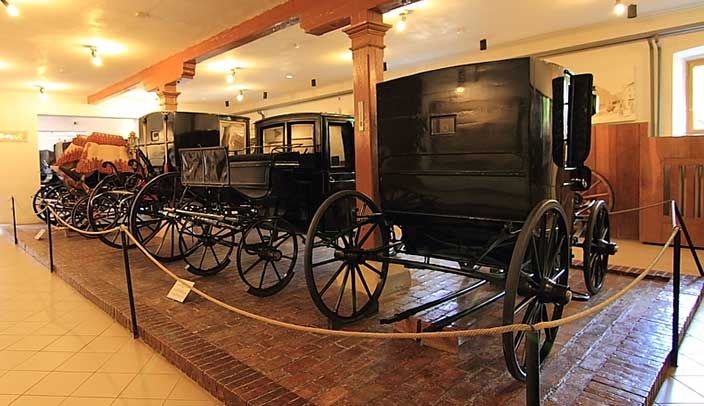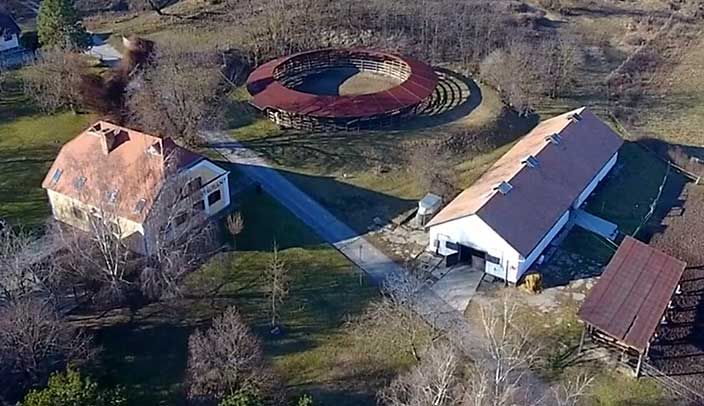Gidran Horses
Gidran Horses
 The gidran horse breed is a horse breed developed in Mezőhegyes, with the knowledge of our predecessors, as a result of classical line breeding, and with the shaping power of horseback riding. It is often derived from 1785, the year the stud was founded.
The gidran horse breed is a horse breed developed in Mezőhegyes, with the knowledge of our predecessors, as a result of classical line breeding, and with the shaping power of horseback riding. It is often derived from 1785, the year the stud was founded.
The professional public also remembers the year 1816, the year Gidrán Senior was transferred to Bábolna. The real situation, on the other hand, is that in the creation of the Gidran line, the descendants of Bábolna moved to Mezőhegyes, mainly Gidran II, and even more Gidran VII, born in 1825. played a role, but around this time, genetic kinship did not guide the mating principles.
Although Lt. General Lobkowitz in 1855 (according to other sources Lt. General Hardegg and earlier) switched to the grouping of studs according to origin, and the herd previously called yellow studs was mainly of Gidran origin, the issue of breed was relegated to the background until the time around the compromise.
 In studs, or at the occasional exhibitions and pedigree drafts, the usage type (carriage horse, light driving horse, economic use, riding horse) came to the fore. After that, targeted line and family breeding sped up, and the chesnut stallion developed into a heavy horse type, which was classified as an independent breed by the Austrian Ministry of War in 1885. From this point on, the gidran breed started its way to a glorious future and its terrible calvary.
In studs, or at the occasional exhibitions and pedigree drafts, the usage type (carriage horse, light driving horse, economic use, riding horse) came to the fore. After that, targeted line and family breeding sped up, and the chesnut stallion developed into a heavy horse type, which was classified as an independent breed by the Austrian Ministry of War in 1885. From this point on, the gidran breed started its way to a glorious future and its terrible calvary.
The herd of the breed never exceeded 150 mares, in the XX. at the turn of the century, it stabilized in 100 broodmares. This number made it possible to replenish stallions and keeping the 16 original mare families in conscious breeding resulted in sufficient variety.
Sports performance in the history of the gidran breed
The relatively small number of people, the existence of the heavy driving horse and farming horse in Mezőhegyes pushed the reins in the direction of being used as a riding horse and at the turn of the 1900s it became an elegant, excellent rideable horse with good abilities. His individuals stood out especially during the various hunts and received a series of accolades.
For thee XX. century, the breed became the dominant Anglo-Arabian breed in Europe with its homogeneous, noble appearance, conscious breeding work, and the simultaneous use of inbreeding and combinative line crossings. It was one of the first among the newly developed varieties not only with its sleek appearance, but also with its performance.
 In 1928, at the Amsterdam Olympics, this race horse,from a breed close to genetic death, won the show jumping gold medal (Elliot). A Bíbor Gidrán sets the unofficial world record for the long jump when he jumps flawlessly across the 10-meter-wide Rákos stream.
In 1928, at the Amsterdam Olympics, this race horse,from a breed close to genetic death, won the show jumping gold medal (Elliot). A Bíbor Gidrán sets the unofficial world record for the long jump when he jumps flawlessly across the 10-meter-wide Rákos stream.
A gidran gelding named Magyaremlék placed 10th at the 1936 Berlin Olympics.
Between the two world wars, Medve (Bakony Gidrán x Gidrán XLIX) was another Gidrán horse of outstanding ability, which entered showjumping almost by chance, as before that it was a reliable driving horse. Also in the 1930s, Pauly Hartmann's gidran mare named "Legszebb" was 5th in the Olympic grand prix in dressage in Aachen. This mare achieved 17 first, 17 second, and 9 third places in this country. Pókos excelled in the national prizes, 4 Gidran IV-2 Furcsa became an Olympic member of the show jumping team.
 The successes prove the breed's excellence and great genetic value. It is understandable that Mezőhegyes did everything in order to regenerate after the destruction of World War II. In 1934, Gustav Rau described the regeneration of the Mezőhegyes breeds, including the gidran, as a "hippological miracle".
The successes prove the breed's excellence and great genetic value. It is understandable that Mezőhegyes did everything in order to regenerate after the destruction of World War II. In 1934, Gustav Rau described the regeneration of the Mezőhegyes breeds, including the gidran, as a "hippological miracle".
The multiple bottleneck effect (wars, Romanian plunder) obviously changed the gene frequency of the herd, and we cannot assume that only genes undesirable for the breeder were lost, but the breed's ability, backwardness and hindrance did not disappear. His magical performance - as if shouting his continued existence, proving his sporting value to the unbelievers - lasted longer. 7 Siglavy Gidran I-4 (1949) of the Szennyes mare family was an excellent jumper. In 1955, he achieved first place on the national championship. His daughter 85 Gidran "B" VIII (1960) also had excellent jumping abilities. Born in 1957, 488 Inka (Gazal Gidran II - Pereg Arany) competed in international competitions for several years. He achieved his best result in 1966, III in show jumping in Poznan, where he was placed in 5 cases, he was also a member of the team that competed in the national prize at CHIO.
755 Igyál (Gidran B VII – 98 Gazal Gidran) at CHIO competition was 5th in Budapest in 1967 ., CHI individual III., team competition II. placed.
 Ragyogó (Siglavy XII – 20351 Lidi, 262 Ozora after Árvácska) won the individual grand prize of the International Military Equestrian Association in Vienna in 1969. He performed successfully abroad several times.
Ragyogó (Siglavy XII – 20351 Lidi, 262 Ozora after Árvácska) won the individual grand prize of the International Military Equestrian Association in Vienna in 1969. He performed successfully abroad several times.
This excellent breed has stood its ground not only in sports, but also at breeding animal exhibitions. At the last major horse breeding exhibition in 1970, 28 Maxim Gidran-31 (Maxim VIII – 22 Gidran "C" II) won the grand prize of the exhibition. In 1990, the Gidran XXI stud stallion won a silver medal, and in 1996, the Gidran XX OMÉK won a gold medal. At the 2000 OMÉK, 146 Gidrán XVI-Novelties won gold, and at the 2005 OMÉK, 191 Gidrán XI Sóhaj also won a gold medal.
The once elegant, noble hussar horse, a successful performer of hunts, today repeatedly demonstrates the extraordinary talent and value both in the military and in the showjumping field, but we can note that the mare 99 Gidran VI (Obelisz) was the Hungarian champion of the two-in hand driviving in 1992.
From one of the breed's most successful new mare families (14 Regöly Gidran Iram), Gidran XI is a heavy category jumper. He has qualified for the Olympics several times. Winner of countless high category international jumping competitions. Hungarian champion. He passed 215 centimeters in the stallion test, in the jumping corridor. His daughters hold their own in national and international equestrian competitions in the eventing and jumping disciplines.
 In the jumping discipline, two young Gidrans qualified for the national breeding competition for 5-6-year-old horses in 2003, where Gidran XI Illanó was 14th in the five-year-old category. Among the 6-year-olds, Pharaoh Gidran XIII achieved the II. place.
In the jumping discipline, two young Gidrans qualified for the national breeding competition for 5-6-year-old horses in 2003, where Gidran XI Illanó was 14th in the five-year-old category. Among the 6-year-olds, Pharaoh Gidran XIII achieved the II. place.
Déva Gidran Hűtlen, one of the outstandingly successful eventing horses of recent years, was the only Hungarian to qualify for the Sydney Olympics.
The series can be continued with Déva Gidran-5 Semmi, which in 1999 started 11 times at the pentathlon world championship and completed all courses flawlessly.
In 2001, at the mare tests of the sports horse breeders' association, Osírisz came third, Sáfrány and Sovánka tied at fourth in the field of 50 three-year-old mares in the performance of the decisive free jumping task.
Gidran Illatos (14 Regöly Gidran Iram folk mare family) won the beginner's championship in 2002, so he also earned the title of Beginner Eventing Horse of the Year. Déva Gidrán Roletti won the same title in 2000.
The line can be continued. In the 1980s and 1990s, Gidran XIX (Gibraltar) was a high category jumper, 173 Gidran Maxim I-78 Ibolya was a high class champion, in 1984 he placed 1st in OB endurance high jump at 170 centimeters.
The successful sports horses that came out of the Gidran herd, which consisted of 40-100 mares during this period, can be listed further, but the world-renowned success of the Romanian-bred Gidrans from mares of Mezőhegyes origin, which consisted of 40 mares, cannot be avoided either.
 Gidran Rasbeg I-12 Mytoc was a member of the Romanian national team and won the high category Balkan Championship in show jumping.
Gidran Rasbeg I-12 Mytoc was a member of the Romanian national team and won the high category Balkan Championship in show jumping.
The successors of Gidran XXXIX, Agressor and Falnic, promote the excellence of gidrans in showjumping competitions throughout Europe and even in the United States. The two listed stallions have been in the super finals of the international Stallion and Mare Competition in Mezőhegyes for many years. Aggressor marched to the finals at the World Equestrian Games in The Hague in 1994. The fact that he was still saddled on the third day is sufficient proof of his toughness." (Dr. Sándor Mihók)
It would be difficult to list all the results achieved in recent years, but we will undertake some of them:
- Gidran Ima was 17th at the World Championship of Young Horses in 2002. He is currently one of the most capable military horses of the Dutch national team.
- Gidrán Regölő was 20th at the World Championship of Young Horses in 2003.
- Gidran Nimfa was 14th in 2003 and 2nd in the Polish Grand Prix in 2005, and today she is Hungary's only *** military horse.
- Gidrán Sóhaj won the 18th World Championship of Young Horses in 2003 and the field day in the same place in 2004, thus winning the title of the best young cross horse in the world.
- In 2004, Gidrán Sáfrány fell and broke his spine during the flawless and easy completion of the cross section at the World Championships in France.
- Noé Gidrán qualified for the World Championship in 2005.
 Our young, 4-5-year-old horses prove their excellent qualities as young horses, following the footsteps of their "predecessors" both at home and abroad.
Our young, 4-5-year-old horses prove their excellent qualities as young horses, following the footsteps of their "predecessors" both at home and abroad.


